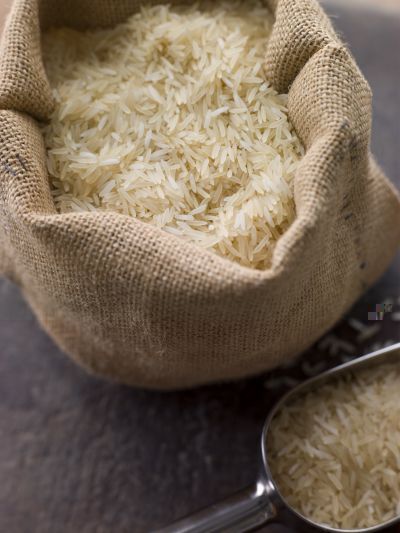Eat local? Senegalese say no thanks

Your support helps us to tell the story
From reproductive rights to climate change to Big Tech, The Independent is on the ground when the story is developing. Whether it's investigating the financials of Elon Musk's pro-Trump PAC or producing our latest documentary, 'The A Word', which shines a light on the American women fighting for reproductive rights, we know how important it is to parse out the facts from the messaging.
At such a critical moment in US history, we need reporters on the ground. Your donation allows us to keep sending journalists to speak to both sides of the story.
The Independent is trusted by Americans across the entire political spectrum. And unlike many other quality news outlets, we choose not to lock Americans out of our reporting and analysis with paywalls. We believe quality journalism should be available to everyone, paid for by those who can afford it.
Your support makes all the difference.The look on restaurant owner Mame Couma Tandjigora's face tells the story. She scowls, as many in her country might when asked about locally grown rice -- a far bigger problem than it may seem.
The look on restaurant owner Mame Couma Tandjigora's face tells the story. She scowls, as many in her country might when asked about locally grown rice - a far bigger problem than it may seem.
"You have to sift it and soak it for a long time," she said. "I prefer my Thai broken fragrant rice."
The Senegalese government had what seemed a reasonable idea after last year's food crisis: have the country grow and eat its own rice instead of sticking with the practice of importing tonnes from Asia.
It was part of a larger plan to achieve self-sufficiency in food production.
But the Senegalese, who serve rice with so many meals, said no thanks. Why? That's where it gets sticky.
Explanations range from taste to social standing to the legacy of colonialism. Whatever the reason, the government is now figuring out how to promote locally grown rice and hopes to import none of the staple by 2012.
It seems they may have a hard time achieving that goal. Last year, over three quarters of the 800,000 tonnes of rice consumed by the Senegalese was imported from Asia.
The impetus for change came from the food crisis, which had sent prices of imported rice soaring. Senegal has since been pushing locally grown rice to rely less on agricultural imports, but despite good crops, much remains unsold.
Tandjigora, who prepares local dishes in a roadside restaurant in a busy neighbourhood of Dakar, goes through six kilos of rice a day.
"Yesterday I served fish with rice and today I am making white rice to go with the Yassa chicken with onions and lemon," she said.
While she does not want the rice grown in the Senegal valley, she says her mother and sister eat it.
"They say it is easier to digest and better for your health because there is less sugar in it," she said.
That may or may not be true. But in shops and restaurants throughout Senegal's capital, sacks of imported rice are piled high and Senegalese rice is hard to find - and not because it's sold out.
Ahmed Mbaye stocks no local rice in his corner grocery shop in Grand Dakar, but pink, blue and green sacs of Thai rice line the entrance.
"I only sell Thai rice. The stuff that is grown in this country, nobody wants to buy it," Mbaye said.
According to the latest official estimates - disputed by some producers - the rice harvest will be at 508,481 tonnes for 2009, up 25 percent compared to 2008.
The figures have prompted a promise from Senegal's agriculture minister that the country "will not import a single kernel of rice in 2012".
But what if no one eats it?
One expert blamed the problem on the legacy of colonialism.
"It dates back to the colonisation," said Wore Gana Seck, the head of the commission for durable development and environment at Senegal's economic and social council.
"Before the Senegalese ate millet and sorghum, but the French imposed a monoculture of peanuts on farmers and imported broken rice from their other colony Indochina for the Senegalese to eat," she says.
The habit stuck, and eating broken imported rice has become a status symbol here, aid and development charity Oxfam's West Africa regional deputy director Raphael Sindaye said.
"One of the main reasons why local rice doesn't sell well is that it is regarded poorly: eating it means you do not have the right social status," he told AFP.
"Before the quality left something to be desired, but the farmers in the north have really worked to improve it and part of the production is even made into broken rice, like the Senegalese households like" for traditional rice with sauce dishes.
"What remains is the battle to commercialise it," Sindaye said.
"Of the 5,000 tonnes produced by farmers we are tracking in the north, 2,400 tonnes remain unsold."
According to the pro-government daily Le Soleil, the minister for food security wants to set up special village stores to sell Senegalese rice exclusively.
"In Ghana local rice was also poorly regarded. But they had a lot of success with posters showing president Kufuor eating local rice," Sindaye said.
There is hope. In Grand Dakar, Fanta Diarra is already won over. The 21-year-old is married to a man from Saint-Louis in the north of the country, where the rice is grown.
"The local rice is good, everybody eats it there in the valley (of the Senegal river). You just have to know how to prepare it, soak it for two or three hours and cook it for 45 minutes," she said.
lbx/cpy/sb/mjs/rl
Join our commenting forum
Join thought-provoking conversations, follow other Independent readers and see their replies
Comments